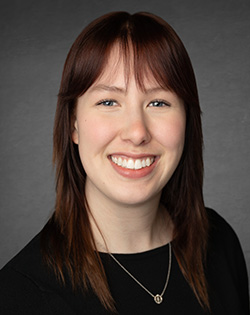Exploring the Community as Medicine Approach

As healthcare and wellness professionals continue to address loneliness, isolation, and the lack of meaningful support as well as the resulting negative effects on individuals’ mental and physical well-being, it is clear creative solutions are needed.
In a special Art & Science of Health Promotion Conference interview webcast, “Community as Medicine, Community as Culture: A Holistic and Multidisciplinary Approach to Experiential Well-Being,” Elizabeth Markle, Ph.D., M.A., shares the origins, application, and outcomes of the Community as Medicine approach, as well as the importance of considering psychological upstreams.
Community as Medicine
Working across healthcare settings and observing countless primary care appointments for her research, Dr. Markle noticed a troubling trend. Patients, regardless of the health issue they were being seen for, were often given one of four main behavioral prescriptions: exercise more, eat better, reduce stress, and/or create social connection. While this is good, meaningful advice given by primary care physicians, the delivery left something to be desired. The advice was crammed in quickly at the end of a fifteen-minute appointment, with no clear instruction on how to accomplish these goals, and patients were left to figure it out themselves. There is no clear path forward with these behavioral prescriptions—They are prescriptions to nowhere. What is worse, when the goal cannot be accomplished, patients feel the burden and walk away with a sense of shame and personal failure.
This phenomenon is not the fault of physicians, who do the absolute best they can with the tools and resources they have. Rather, it is a systemic issue that lies within our healthcare structures. Dr. Markle began to wonder: If there are behavioral prescriptions with no way to fill them, what would a behavioral pharmacy look like?
Community as Culture
Dr. Markle and fellow psychologist Dr. Benjamin Emmert-Aronson created Open Source Wellness to test the Community as Medicine model of care. Patients are referred by physicians trained in the method and receive their behavioral prescription for community experience. They then attend a series of weekly gatherings with other patients, where they experientially practice activities aligned with the model’s four pillars: Move, Nourish, Connect, and Be. This is a trauma-informed, joyful approach to group health and wellness coaching that allows individuals to be vulnerable and create meaningful connections.
These gatherings provide participants with a uniquely transformational experience that can help to dismantle their shame and build muscles of self-care and community. But what about wider implementations of this model? Let’s look at some of the data. Over time, participants report the following changes, on average:
- An improvement in nutrition, with participants eating about one additional serving of fruits and vegetables per day
- An increase in physical activity (to about 40-60 more minutes per week)
- An improvement in depression scores, from an average PHQ-9 score of 14 to an average score of 8 or 9
- Improvements in anxiety and loneliness
- Increases in social connection and belonging.
Looking Upstream
You may be familiar with the idea of upstream factors and the downstream health challenges they contribute to; essentially, if one looks upstream from a particular health condition, they will find the social, financial and institutional circumstances that may have led to that health condition. Take asthma, for example: Upstream from this difficulty in breathing we find bad building conditions and environmental access to toxins. Upstream from that, we find redlining and other discriminatory policies that inevitably impact health and access to care.
Dr. Markle encourages us to think upstream and downstream in psychological terms. Those who repeatedly have negative experiences with the healthcare system and leave with a sense of personal failure may have the downstream effect of experiencing despair, which is just upstream of violence. It is an important reminder to consider the widespread impacts system functions have on individuals and communities.
You can learn more about the Community as Medicine approach from Open Source Wellness co-founders Dr. Elizabeth Markle and Dr. Benjamin Emmert-Aronson during their session “Community as Medicine, Community as Culture: A Holistic and Multidisciplinary Approach to Experiential Well-Being" at the 35th Annual Art & Science of Health Promotion Conference. Visit www.wellnessalliance.org/ASHPC to register and learn more about this exciting conference that brings together health and wellness professionals to learn, share, and connect.
Resources
Dr. Elizabeth Markle is co-founder and executive director of Open Source Wellness. Attend the Michael P. O’Donnell Special Plenary Session, presented by Dr. Markle and Dr. Benjamin Emmert-Aronson at the 35th Annual Art & Science of Health Promotion Conference and visit opensourcewellness.org to learn more.
The Wellness Alliance, in partnership with the International Foundation of Employee Benefit Plans, presents the 35th Annual Art & Science of Health Promotion Conference, March 31-April 4 in Scottsdale, Arizona.
About the Contributor
Categories
- Belonging (3)
- Benchmarks (3)
- Benefits (6)
- Cancer (4)
- Culture (19)
- Emotional Wellness (16)
- Healthy Workplaces (13)
- Intellectual Wellness (15)
- Legal and Compliance (7)
- Mental Health (8)
- Occupational Wellness (18)
- Physical Wellness (18)
- Social Wellness (9)
- Spiritual Wellness (4)
- Wellness Alliance Events (5)
- Wellness Initiatives (14)
- Workplace Wellness (7)


